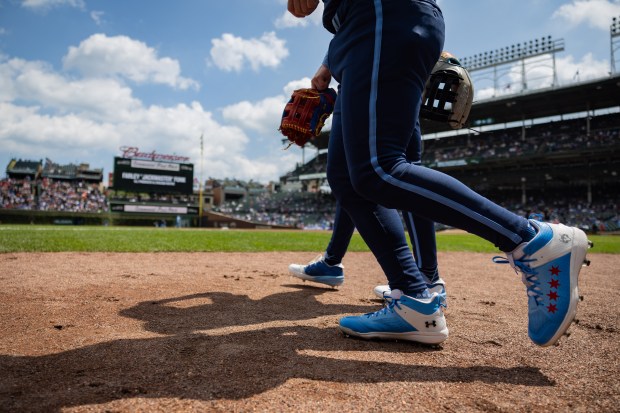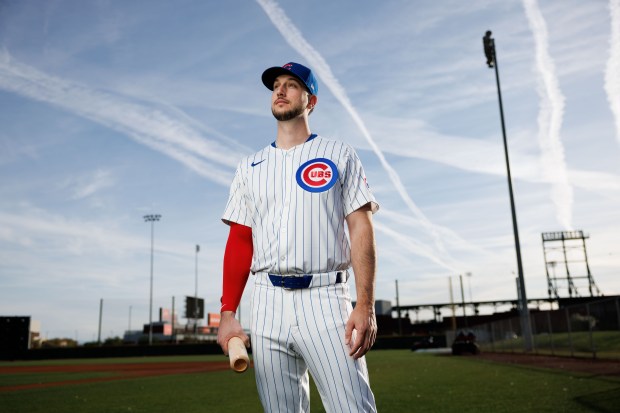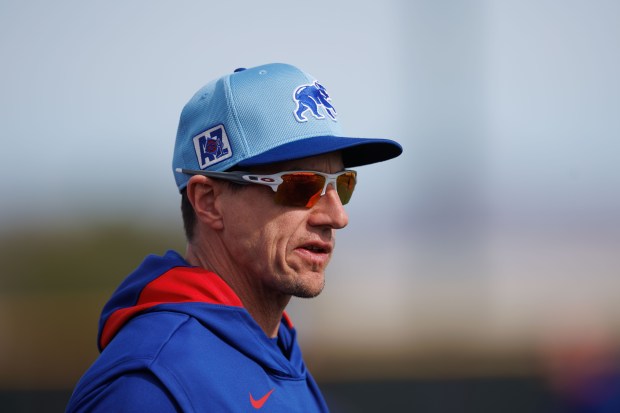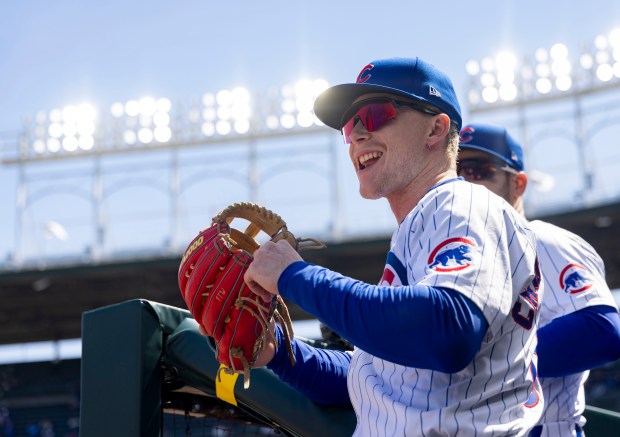Wrigley Field was a beehive of activity Thursday morning as workers prepared the ballpark for Friday’s home opener between the Chicago Cubs and San Diego Padres.
Last-minute fixes were still being made, and some Cubs players trickled into the clubhouse to put stuff in their lockers or work out on their off day. In 24 hours the gates would open, and another chapter in the long-running saga of the 111-year old ballpark would begin.
When we last saw the Cubs at Wrigley, on Sept. 29, they ended an 83-79 season with a 3-0 loss to the Cincinnati Reds. Manager Craig Counsell’s Cubs debut was one that most would just as soon forget.
“No question you think about things, and after this season it’s important to reflect, because it’s freshest in your mind,” Counsell said afterward. “I think it’s important you reflect on the season, absolutely. If I sit here and say that we need to be better, that reflection has to create some changes.”
Only one of the six pitchers Counsell used that day remains on the roster, though most of the starters and position players are back, along with new slugger Kyle Tucker in right field and rookie Matt Shaw at third base.
The early results have been mixed, with a 5-4 record that could easily have been 6-3. But considering the long trek to Japan and the unusual circumstances surrounding the start, the Cubs are satisfied with the results. They’re coming off a three-game sweep in West Sacramento, Calif., in which they scored 35 runs and hit eight home runs against Athletics pitching.
Shota Imanaga will face the unbeaten Padres on Friday in the 1:20 p.m. opener, weather permitting.
Wrigley Field has had a few changes as well. A new patio section nicknamed “The Yard” has been erected in center field, and an ADA seating area was built behind the bleacher seats in left. That could mean fewer home run balls landing on Waveland Avenue for the ballhawks who hang around the corner of Waveland and Kenmore, but time marches on, and no one ever promised them free baseballs for life.
A new coat of paint has been added to the old, hand-operated scoreboard in center, an anachronism that remains the iconic backdrop of a million selfies. The bunting was hung on the ballpark facades, and banners of the players have been placed on light poles outside Wrigley. Pete Crow-Armstrong’s banner was removed temporarily this week when it was discovered it used his old number instead of the No. 4 he switched to in spring training after losing a bet to team President Jed Hoyer.
God is in the details, as architect Ludwig Mies van der Rohe once said.
Crow-Armstrong has taken on the unofficial role of bleacher emcee that Sammy Sosa perfected in the 1990s. Assistant hitting coach John Mallee told Crow-Armstrong it’s his job to get the bleacherites revved up before games.
“That’s just who I am,” Crow-Armstrong told me in Arizona. “(Malle) has always been good to remind me that those are my people out there, and if it is my outfield, it’s important to acknowledge them and interact with them. You know the bleachers. They’re coming to watch us. Ian (Happ) taught me how to thank the fans, and I think that was one of the coolest (lessons) ever.
“I saw it as a nice opportunity, and it felt very easy and natural to go out there every day and try to evoke some emotion from them before the ball is dropped, I guess.”
Wrigley Field debuts menu with jibaritos, baseball doughnuts and fried ranch bombs
Whenever the ball is dropped Friday, the Cubs will be under the microscope after four consecutive playoff-free seasons. They’re hoping to turn Wrigley into a true home-field advantage after a season in which they scored nearly 100 more runs on the road (417) than at home (319). The Cubs hit .227 at home in ’24 with a .368 slugging percentage, as opposed to .256 on the road with a .416 slugging percentage.
It often has been noted that the wind blew in more frequently last season than in previous years, which could be a trend with climate change. But the Cubs believe it was an anomaly, and they aren’t changing their approach.

“It hasn’t happened like that in quite a few years,” hitting coach Dustin Kelly said. “There are always going to be days where the wind blows in. That’s just part of Wrigley. But yeah, I’m not going to try to base our offense off the wind blowing in or the wind blowing out.”
So no one will be going over the wind charts during game planning at Wrigley?
“Listen, you can walk outside or if you drive in on Lake Shore (Drive) you can see what the wind is doing and have a pretty good idea that morning,” Kelly said with a grin.

Tucker will get his first taste of Wrigley as a Cub in what fans hope will be the start or a long relationship. He played only three games on the North Side with the Houston Astros, so Wrigley will be a new experience for Hoyer’s most important offseason acquisition and one of the game’s biggest free agents come November.
After a miserable spring in which he went 3-for-30 (.100) with one home run, Tucker finished the nine-game trip hitting .324 with four home runs, 11 RBIs and a league-leading five doubles. Counsell said in January that he believes Tucker’s presence could lift the rest of the lineup.
“In baseball, guys that produce seasons like he’s produced, every night there’s damage,” Counsell said. “That’s what it feels like from seasons like that. Or there are games where they single-handedly take over. That’s what lifts it. The impact it has on guys around him … it just creates runs.”

Counsell is seemingly more comfortable in his second season in Chicago. He knows the ballpark, the fans and the media are different from what he experienced in Milwaukee. Counsell also understand there are greater expectations in 2025 and added pressure on him to justify the record five-year, $40 million contract he signed to replace David Ross.
Counsell acknowledged early in spring training that he failed to communicate better with Seiya Suzuki over the outfielder’s in-season switch to a DH role and vowed to be better in 2025. Suzuki is also off to a hot start with four home runs and 11 RBIs.
Managing players was one of Counsell’s strong suits in Milwaukee, where the Brewers typically outperformed their expectations. In the upcoming book “Skipper: Why Baseball Managers Matter And Always Will,” Counsell told author Scott Miller: “So many people are confused today, they think a manager’s job is 90% strategy, and it’s not. Managing people is the bigger part of your job, and the strategy part is a smaller part.”
Still, a manager is only as good as his bullpen, and the Cubs’ revamped pen remains a work in progress.
Cubs fans will get their first chance Friday to see whether the winds of change will bring different results.
It’s another chapter in a book you just can’t put down.



